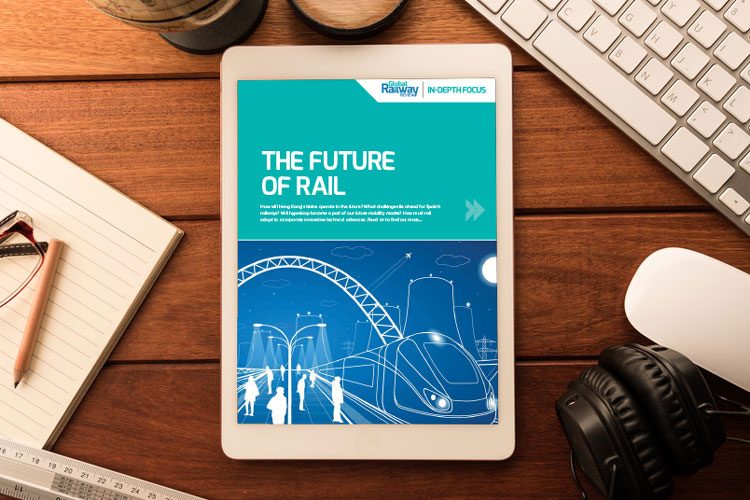Future of Rail In-Depth Focus 2018
Posted: 5 September 2018 | Global Railway Review | No comments yet
How will Hong Kong’s trains operate in the future? What challenges lie ahead for Spain’s railways? Will hyperloop become a part of our future mobility modes? How must rail adapt to incorporate innovative technical advances. Read on to find out more…


In this In-Depth Focus:
- Establishing rail as the backbone of future mobility
Society expects an efficient, reliable, seamless, accessible, safe and green transportation system. UNIFE’s Director General, Philippe Citroën, believes the future of rail lies in flexibility and how it can adapt and incorporate future technical advances. - The future of rail in Hong Kong
Since the year 2000, the rail industry in Hong Kong has undergone major changes. Ridership has continued to grow and moving into the 2020s, it is likely to continue doing so. The question of how Hong Kong’s trains will operate in the future, especially amid growing expectations of environmentally sustainable infrastructure, is critical for examining the future of rail in the Hong Kong mobility sector. Jeremy Long, Chief Executive Officer – European Business, MTR Corporation, explores further. - Renfe’s next decade: Preparing for the challenges ahead
In times of accelerated change marked by an impactful digital revolution, the 2018 edition of the InnoTrans event will take place at a key moment for the global railway sector. Furthermore, with the year 2020 approaching, rail operators are being called upon to integrate a new business and service vision. For Renfe, the Spanish state-owned rail freight and passenger operator, this means overcoming new challenges as it continues its ambition to become an operational benchmark for the sector. - Making hyperloop a reality: Virgin Hyperloop One
In late-2014, hyperloop was an idea drawn on a whiteboard in a garage. Less than three years later, a 500m-long full-scale prototype was built in the Nevada desert, complete with a levitation system, propulsion, power and electronics systems, controls, vacuum structures and an autonomous pod, capturing the attention of transportation agencies worldwide. How did it happen in such a short amount of time and is this travel experience realistically possible? Josh Giegel, Virgin Hyperloop One co-Founder and CTO, explains more.
This In-Depth Focus is restricted - login or subscribe free to access
Thank you for visiting our website. To access this content in full, you will need to log in. It is completely free to subscribe and, in less than a minute, you can continue reading. If you have already subscribed, just log in.
Why subscribe? Join our growing community of thousands of industry professionals and gain access to:
- Bi-monthly issues in print and/or digital format
- Case studies, whitepapers, webinars and industry-leading content
- Breaking news and features
- Our extensive online archive of thousands of articles and years of past issues
- And it's all free!
Click here to Subscribe today Login here
Issue
Related topics
Digitalisation, High-Speed Rail, Passenger Experience/Satisfaction, Sustainability/Decarbonisation, Technology & Software








